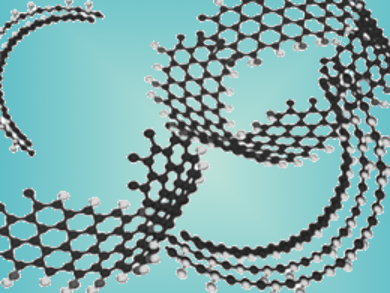White-light-emitting diodes (W-LEDs) are of great interest to the industry because of their long lifetime and low electricity consumption. The most practical way of building W-LEDs is to integrate blue LED chips with yellow phosphors. However, this involves rare-earth raw materials, which makes the process expensive.
Haibo Zeng, Nanjing University of Science and Technology, China, and colleagues have developed luminescent carbon LEDs as a low-cost and environmentally friendly alternative. They synthesized intercrossed carbon nanorings (IC-CNRs) in a one-step hydrothermal method. These have relatively pure hydroxyl surface states which makes it possible to overcome aggregation-induced quenching (AIQ) effects and to emit scarce stable yellow-orange luminescence in both colloidal and solid states. The luminescence is attributed to the transition from the LUMO and nearby states to the HOMO.
These low-temperature synthesized and toxic ion-free IC-CNRs can be used as solid phosphors on blue LED chips.
- Intercrossed Carbon Nanorings with Pure Surface States as Low-Cost and Environment-Friendly Phosphors for White-Light-Emitting Diodes,
Xiaoming Li, Yanli Liu, Xiufeng Song, Hao Wang, Haoshuang Gu, Haibo Zeng,
Angew. Chem. Int. Ed. 2014.
DOI: 10.1002/anie.201406836




